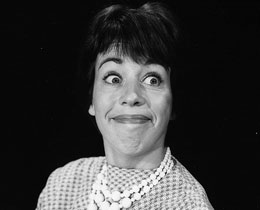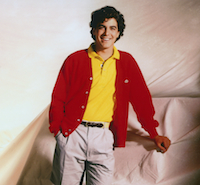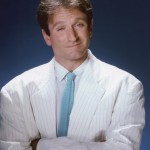 The ginger-haired, genial comic performed on Broadway before and after her popular career on television. Burnett’s experience in clubs and local shows in New York City helped her make it to the Broadway stage in 1959. Her turn as the gawky Princess Winnifred the Woebegone in “Once Upon a Mattress” caught the attention of TV personality Garry Moore. She auditioned for Moore’s variety show on CBS and after a few guest stints, became part of the full-time cast.
The ginger-haired, genial comic performed on Broadway before and after her popular career on television. Burnett’s experience in clubs and local shows in New York City helped her make it to the Broadway stage in 1959. Her turn as the gawky Princess Winnifred the Woebegone in “Once Upon a Mattress” caught the attention of TV personality Garry Moore. She auditioned for Moore’s variety show on CBS and after a few guest stints, became part of the full-time cast.
Five years later, CBS was so eager to showcase the multi-talented Burnett that they offered her the choice of a starring role in a sitcom or the lead in a variety show. She chose the latter, landing “The Carol Burnett Show.” In musical numbers and parodies of television soap operas and movies, Burnett worked closely with a cast of regulars including Tim Conway, Harvey Korman, Vicki Lawrence and Lyle Waggoner. It was the kind of show that could reach all generations — parents snickered at the naughty asides, kids laughed at Burnett’s slapstick and everyone appreciated the splashy musical numbers at the close of each episode.
Burnett had always planned to become a singer and had never thought she would do comedy, but she admitted, “I liked to hear the laughs.” After 11 years, 286 shows, 6 Emmy awards and 22 nominations, Burnett sensed the program had run its course and decided to end the show on a high note in March 1978. Good writing, great casting and a beloved funny lady at the center were the ingredients that made “The Carol Burnett Show” succeed for more than a decade.
Carol Burnett as a Creative Collaborator
Though the “Carol Burnett Show” centered on Burnett, its 11 years of success largely arose from how well the talented ensemble worked together.
“One of the things I learned from Carol is that you are as good as the people that surround you and she was very much – ‘fly, baby, fly,’” says Vicki Lawrence. In 1975, Tim Conway joined the cast full-time, adding an element of surprise with his improvisation skills. Viewers tuned in each night to see Conway try to get Burnett or Korman to crack-up in the middle of their scenes.
Burnett accepted contributions of lines, suggestions and thoughts from everybody — which is how one of the show’s most memorable gags came about in “Went With the Wind,” a take-off of “Gone With the Wind.” For her part as the down-at-the-heels “Starlet” character, costume designer Bob Mackie suggested Burnett go on stage dressed in a gown made of window drapes, still hanging from a curtain rod placed on her shoulders. When responding to Rhett Butler’s compliment on her dress, Starlet answers, “Thank you, I saw it in the window and I just couldn’t resist it.”














































